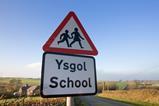The 1, 2, 3 of teaching science in two languages
Mae’r erthygl hon ar gael yn Gymraeg
Cael y fersiwn Gymraeg.

Depending on the school they attend, pupils in Wales study science through the medium of Welsh, English or bilingually. Teachers in these settings must apply additional pedagogical approaches to ensure pupils develop scientific understanding in multiple languages.
I studied the strategies used by science teachers who teach in Welsh and bilingually. As well as being useful to those teaching students who have a first language other than English, methods that develop oral and literacy skills in science are also applicable to all teachers. Here are three common strategies I found that are worth sharing.
1. Make more time for talk
Pupil–teacher talk allows teachers to explore pupils’ understanding. Teachers use techniques, including resisting the urge to interrupt, asking pupils to summarise and turning statements into questions, to encourage pupils to take part in dialogue.
I found teachers made frequent use of pupil–teacher talk for ages 7–14, but felt there was less time available to do this with 14–16 year-old students, because of increased curriculum content. Although time is precious at this level, it may be worth investing some time further time in pupil talk beyond age 14, as other studies have found it can promote learning, especially in bilingual settings.
2. Work on literacy skills
Pupils do much better in science if they can comprehend what they’re reading. In my study, all science teachers followed whole-school literacy policies to develop pupils’ literacy skills. They gave attention to pupils’ understanding and use of key terms. They also supported pupils’ understanding of specific Welsh verb forms and used the availability of both languages to probe pupils’ understanding of scientific concepts. For example:
- Teachers supported their pupils’ use of the impersonal form of the verb, as found in Welsh-medium examination papers (eg cynhyrchir trydan/electricity is produced) by working with their school’s Welsh language department.
- They supported pupils’ fluency concerning the meaning of Welsh key scientific enquiry terms by using flash cards.
- Teachers challenged their pupils to explain a scientific term, rather than just giving the translation of the key word.
3. Use translanguaging
Translanguaging is a bilingual strategy that allows pupils to access more than one language to complete a task. Arts and humanities teachers use the strategy extensively, but science teachers rarely use it. Deliberately using this strategy more often could help teachers to overcome the need to translate everything from English into Welsh, especially journal or topical science news articles.
- Use this strategy to discuss articles from the current issue of EiC. Ask pupils to process the information in English and discuss it (or answer questions) in Welsh.
- Periodically, ask the pupils to gain information through English (eg from English-medium science exam questions or by processing information gathered online from English websites) and answer (or create something new) in Welsh.
- Estyn consider it to good practice to use ‘pupil-tutors’ in science who can support those who are new to learning science through Welsh.
This project was supported by Jane Essex and Sarah Masters of the Royal Society of Chemistry.













No comments yet